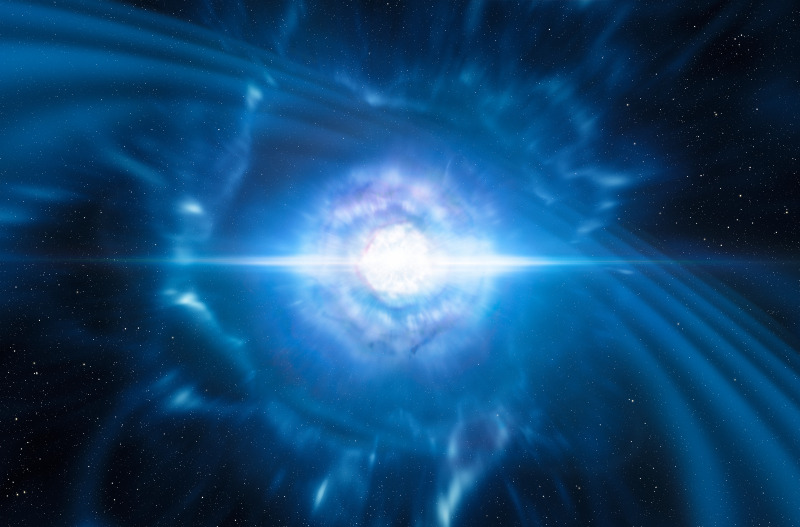
New Science Shows Einstein Was Right About Gravitational Waves
by Allison Torres, age 12
Gravitational waves are identifiable changes in space-time that are produced when objects move at significantly high speeds. According to NASA, gravitational waves can be made when a star explodes asymmetrically, when two big stars orbit each other, or when two black holes orbit each other and merge. For example, when objects move, they create waves, just like when you shake a stick back and forth in the water. The same physics applies when a planet or star shakes back and forth at incredibly high speeds, only instead of waves in the water, gravitational waves are created.
In his famous general theory of relativity, Albert Einstein was the first to theorize the idea of gravitational waves. Einstein explained how large objects can make changes in space-time when spiraling closer to each other, and those changes, or ripples, are what he called gravitational waves. However, he wasn’t confident in his theory, and the technology didn’t exist at the time to prove it.
It is very difficult for scientists to measure or detect these gravitational waves, because they are so small and there are few scientific instruments that can detect them. Nevertheless, the Laser Interferometer Gravitational-Wave Observatory (LIGO) is specialized in detecting these gravitational waves. LIGO can detect if any gravitational waves are reaching our planet. LIGO has two observatories so any gravitational waves that are detected can be double-checked for accuracy.
Using mirrors and lasers at their sites, LIGO can detect the squeezing and stretching of spacetime caused by gravitational waves. LIGO uses L-shaped detectors, each 2.5 miles long, with mirrors on each end. A laser passes back and forth between the two mirrors to measure the distance between them. This laser can then detect when there is even a small change in the distance between the two mirrors, which would signify that a gravitational wave is passing through our planet.
In the 1970s, scientists in Arecibo, Puerto Rico saw gravitational waves for the first time. Originally, using a giant radio telescope the group of scientists were studying the orbits of two pulsars, which are rotating neutron stars. While doing so, they noticed that the pulsars had moved closer together, which led them to believe gravitational waves were present. Two of the scientists, Russel Hulse and Joe Taylor earned the Nobel Prize in Physics in 1993 for this discovery.
However, it took more than 20 years for scientists to directly measure such waves. At 6:00 in the morning on September 14, 2015, scientists saw something no human had ever seen before: two black holes colliding. The two black holes had been orbiting each other for millions of years. As they got closer together, they circled each other faster and faster, and finally collided and merged into a single black hole. In the process they also created gravitational waves, which the LIGO instruments were able to detect. What's more, the measured gravitational waves closely matched what Albert Einstein predicted.
Revolutionary new equipment and scientific advancements has allowed for improved studies on various theories, including some of Einstein's work. Since 2015, scientists continue to detect and study gravitational waves, leading to new research and new understandings about our universe.
[Sources:
National Geographic
;
NASA SpacePlace; TedEd
]

